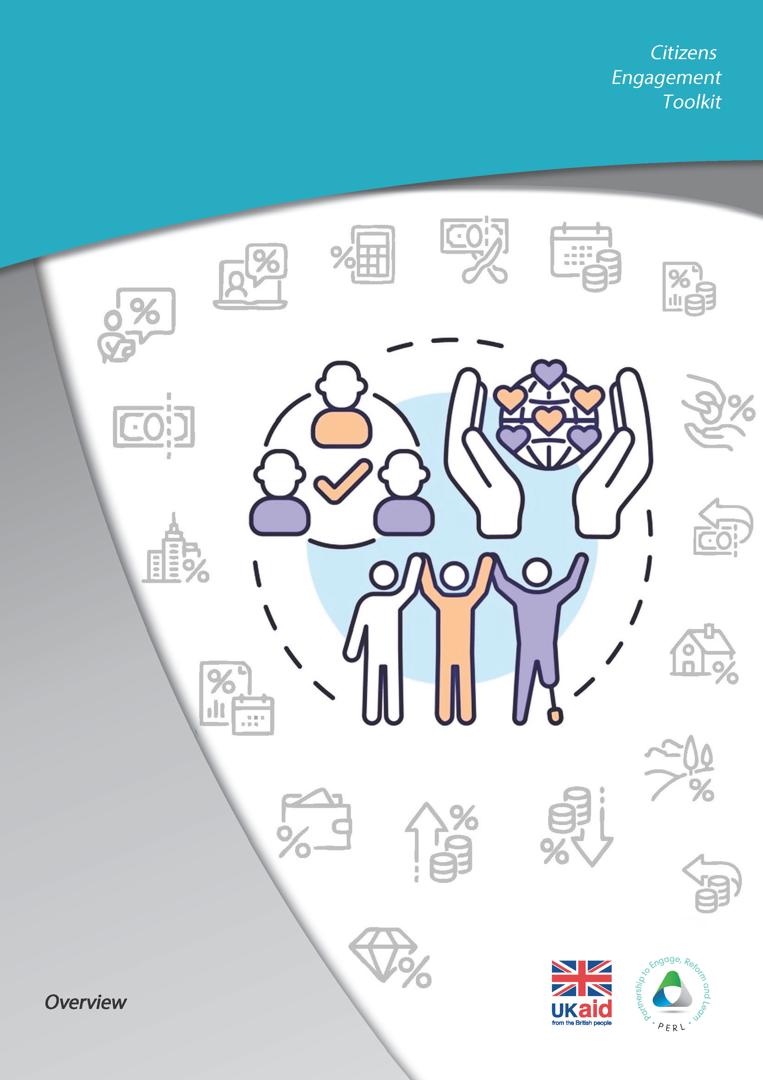Guide to Enhance Citizen’s Understanding of Fiscal Issues and Publications by State Governments
PERL has supported Public Financial Management and broader governance reforms across Nigeria since 2016 in our partner States of Jigawa, Kaduna and Kano, to the South West, South East and North West State through our regional hubs, and to Federal …
Overview
PERL has supported Public Financial Management and broader governance reforms across Nigeria since 2016 in our partner States of Jigawa, Kaduna and Kano, to the South West, South East and North West State through our regional hubs, and to Federal Government. Support has been provided to both the supply side actors – namely the Government- and the demand side – i.e., citizens and other non-state actors.
The Citizens Engagement Toolkit can be broken down into four main elements:
• Toolkit Overview and simple guidance for its deployment
• Citizens Engagement Guide that helps state governments understand the points within the Public Financial Management (PFM) cycle where there would be engagement with non-state actors, and how this engagement should be undertaken.
• Tools to support the preparation and publication of the Citizens Budget (CB), including an MS Excel model, publication template, instructions and example based on the fictious WAZOBIA state
• Tools to support the preparation and publication of the Citizens Accountability Report (CAR), again including an MS Excel model, publication template, instructions and example based on the fictious WAZOBIA state.
The guide is intended for use by all Ministries, Departments and Agencies (MDAs) to support their engagement with non-state actors throughout the budget (PFM) cycle.
Curriculum
Curriculum
- 12 Sections
- 101 Lessons
- 10 Weeks
- Introduction2
- Overview of Guidance Document6
- PFM Cycle9
- 3.1Introduction
- 3.2Who are the Stakeholders in the PFM Cycle and their Role
- 3.3Citizens/Civil Society
- 3.4Legislature (State House of Assembly)
- 3.5Executive
- 3.6PFM Oversights Agencies and PFM Implementation Agencies
- 3.7Others (Lender/Development Partners, Contractors, Other Countries)
- 3.8Module Wrap Up
- 3.9Quiz 340 Minutes11 Questions
- Citizens Role in PFM Cycle12
- 4.1Introduction
- 4.2Overview of Citizens’ Role and Engagement process in PFM Cycle
- 4.3Planning & Budget – Introduction and Policy Formulation
- 4.4Planning & Budget – Medium Term Planning and Budgeting
- 4.5Planning & Budget – Annual Budget Preparation
- 4.6Budget Execution
- 4.7Accounting & Reporting
- 4.8External Scrutiny & Audit
- 4.9Tools/Mechanism for Citizens Engagement Part 1
- 4.10Tools/Mechanism for Citizens Engagement Part 2
- 4.11Module Wrap Up
- 4.12Quiz 450 Minutes10 Questions
- PFM Key Concepts17
- 5.1Introduction and Key PFM Concepts
- 5.2National Chart of Accounts – Part 1 Overview
- 5.3National Chart of Accounts – Part 2 Administrative segment
- 5.4National Chart of Accounts – Part 3 Economic segment
- 5.5National Chart of Accounts – Part 4 Function and Fund segments
- 5.6National Chart of Accounts – Part 5 Geo-Location and Programme segments
- 5.7Fiscal Performance – Part 1 Key Concepts
- 5.8Fiscal Performance – Part 2 Examples
- 5.9Fiscal Forecasting
- 5.10Value for Money – Part 1 Overview and Economy Metrics
- 5.11Value for Money – Part 2 Efficiency and Effectiveness Metrics
- 5.12Cash vs Accrual basis of Budgeting and Accounting – Part 1 Key Concepts
- 5.13Cash vs Accrual basis of Budgeting and Accounting – Part 2 Examples
- 5.14Budgeting Techniques
- 5.15Other Key PFM Concepts and Terms
- 5.16Quiz 510 Minutes13 Questions
- 5.17Module Wrap Up
- MTEF14
- 6.1Introduction
- 6.2What is an MTEF – Part 1 Overview and MTFF
- 6.3What is an MTEF – Part 2 MTBF and MTSSs
- 6.4What information is provided in the MTEF/FSP document – Part 1 Overview and EFU
- 6.5What information is provided in the MTEF/FSP document – Part 2 FSP and BPS
- 6.6Key guidance for Non-State Actors on interpreting the information in the MTEF Document – Part 1 Overview and Fiscal Performance
- 6.7Key guidance for Non-State Actors on interpreting the information in the MTEF Document – Part 2 Debt and Fiscal Framework
- 6.8Key guidance for Non-State Actors on interpreting the information in the MTEF Document – Part 3 Mineral Ratio
- 6.9Key guidance for Non-State Actors on interpreting the information in the MTEF Document – Part 4 Fiscal Framework
- 6.10Key guidance for Non-State Actors on interpreting the information in the MTEF Document – Part 5 Fiscal Risks and Sector Allocations
- 6.11How to use the MTEF to hold Government to Account
- 6.12Summary of Key Issues
- 6.13Module Wrap Up
- 6.14Quiz 620 Minutes10 Questions
- Citizens Budget11
- 7.1Introduction
- 7.2What is Budget and what is Citizens Budget – Part 1 Content of the CB
- 7.3What is Budget and what is Citizens Budget – Part 2 Importance of the CB
- 7.4Information Provided in CB – Part 1
- 7.5Information Provided in CB – Part 2
- 7.6Interpreting Information provided in CB
- 7.7How to use the CB to hold Government to Account – Part 1
- 7.8How to use the CB to hold Government to Account – Part 2
- 7.9Summary of Key Issues
- 7.10Module Wrap Up
- 7.11Quiz 750 Minutes11 Questions
- BPR11
- 8.1Introduction
- 8.2What is a BPR?
- 8.3What information is provided in the BPR documents?
- 8.4Key guidance for Non-State Actors on interpreting the information in the BPR Document – Part 1 The Four Quaterly Reports
- 8.5Key guidance for Non-State Actors on interpreting the information in the BPR Document – Part 2 Assessing Revenue Performance
- 8.6Key guidance for Non-State Actors on interpreting the information in the BPR Document – Part 3 Assessing Expenditure Performance
- 8.7How to use the BPR to hold Government to Account – Part 1 Overview
- 8.8How to use the BPR to hold Government to Account – Part 2 Examples
- 8.9Summary of Key Issues
- 8.10Module Wrap Up
- 8.11Quiz 850 Minutes12 Questions
- CAR11
- 9.1Introduction
- 9.2What are Audited Financial Statements and what is CAR
- 9.3Information Provided in CAR – Part 1 Budget Out-Turn Recurrent Revenues
- 9.4Information Provided in CAR – Part 2 Budget Out-Turn Expenditure and IGR Details
- 9.5Information Provided in CAR – Part 3 Other Schedules
- 9.6How to interpret information in the CAR
- 9.7Using CAR to hold Government to Account – Part 1
- 9.8Using CAR to hold Government to Account – Part 2
- 9.9Summary of Key Issues
- 9.10Module Wrap Up
- 9.11Quiz 910 Minutes0 Questions
- Procurement9
- 10.1Introduction
- 10.2What is Public Procurement (including E-procurement)
- 10.3What procurement information is publicly available
- 10.4Interpreting Information
- 10.5Leveraging Procurement Information for Accountability – Part 1 Procurement Law
- 10.6Leveraging Procurement Information for Accountability – Part 2 OCDS
- 10.7Summary of Key Issues
- 10.8Module Wrap Up
- 10.9Quiz 910 Minutes0 Questions
- Practical Implementation Experiences of Citizens Engagement8
- 11.1Introduction
- 11.2Kano State – Engagement on MTEF Part 1
- 11.3Kano State – Engagement on MTEF Part 2
- 11.4Kaduna State – Town Hall Meetings/CDC Part 1
- 11.5Kaduna State – Town Hall Meetings/CDC Part 2
- 11.6Jigawa State – Engagement on the Audited Financial Statements
- 11.7Quiz 1110 Minutes0 Questions
- 11.8Ebonyi State
- Wrap Up1
Instructor
Requirements
- Some introductory or professional courses in finance, accounting, or governance may be beneficial but not required
- Some modules, especially advanced or professional ones, may require work experience in finance, budgeting, policy-making, or public administration
- Basic numeracy and analytical skills – understanding financial reports, budgets, and expenditure tracking.
- Computer literacy – familiarity with Excel, financial software, or government financial management systems is an advantage.

